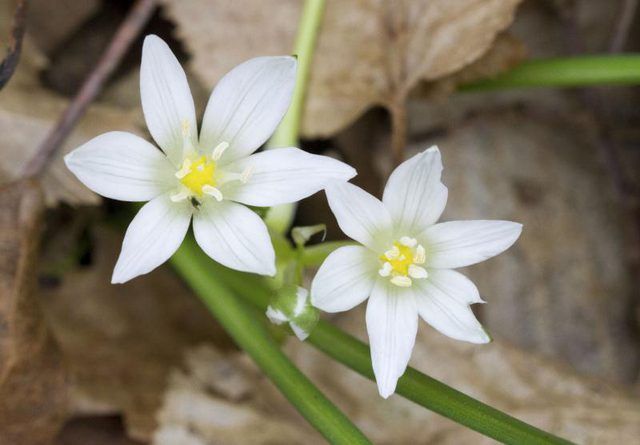Bulbs
Flower Basics
Flower Beds & Specialty Gardens
Flower Garden
Garden Furniture
Garden Gnomes
Garden Seeds
Garden Sheds
Garden Statues
Garden Tools & Supplies
Gardening Basics
Green & Organic
Groundcovers & Vines
Growing Annuals
Growing Basil
Growing Beans
Growing Berries
Growing Blueberries
Growing Cactus
Growing Corn
Growing Cotton
Growing Edibles
Growing Flowers
Growing Garlic
Growing Grapes
Growing Grass
Growing Herbs
Growing Jasmine
Growing Mint
Growing Mushrooms
Orchids
Growing Peanuts
Growing Perennials
Growing Plants
Growing Rosemary
Growing Roses
Growing Strawberries
Growing Sunflowers
Growing Thyme
Growing Tomatoes
Growing Tulips
Growing Vegetables
Herb Basics
Herb Garden
Indoor Growing
Landscaping Basics
Landscaping Patios
Landscaping Plants
Landscaping Shrubs
Landscaping Trees
Landscaping Walks & Pathways
Lawn Basics
Lawn Maintenance
Lawn Mowers
Lawn Ornaments
Lawn Planting
Lawn Tools
Outdoor Growing
Overall Landscape Planning
Pests, Weeds & Problems
Plant Basics
Rock Garden
Rose Garden
Shrubs
Soil
Specialty Gardens
Trees
Vegetable Garden
Yard Maintenance
How to Plant a Star-of-Bethlehem
How to Plant a Star-of-Bethlehem. Straddling two seasons with masses of snowflake-delicate white flowers nodding above green, grassy leaves, star-of-Bethlehem (Ornithogalum umbellatum) blooms in spring from bulbs planted in fall. The only time it rests is in summer, when the rest of the garden is going gangbusters so it's not likely to be missed....

Straddling two seasons with masses of snowflake-delicate white flowers nodding above green, grassy leaves, star-of-Bethlehem (Ornithogalum umbellatum) blooms in spring from bulbs planted in fall. The only time it rests is in summer, when the rest of the garden is going gangbusters so it's not likely to be missed. Perennial in U.S. Department of Agriculture plant hardiness zones 4 through 9, this easy-care charmer has two major drawbacks: Its rapid spread borders on invasive, and it's loaded with toxins. Plant it where it won't endanger curious children or pets.
When to Plant
Without an extended cold period in winter, star-of-Bethlehem won't bloom. In mild-winter climates, plant the bulbs in fall only after the soil temperature drops below 60 degrees Fahrenheit. It will begin blooming late winter or early spring.
Measure the soil temperature with a probe thermometer, a flat, temperature-reading dial attached to a metal probe. When the soil begins cooling in fall, check it between 10 and 11 a.m. Insert the probe 5 inches deep and leave it in place until the dial settles on a reading.
Record the soil's temperature for three or four consecutive days and then average the readings. When they average below 60 F, it's cold enough to plant.
Where the ground freezes in winter, plant star of-Bethlehem four weeks before the the first fall frost date so its roots have time to establish before winter.
Where to Plant
Choose a site with between four and six hours of daily sun and well-drained, organically rich soil. Allow room to space the bulbs 2 to 3 inches apart and to accommodate their enthusiastic spread. Ideal sites include rock and woodland gardens or meadows, where they can naturalize without crowding out other plants.
Soil Amendments
As a perennial bulb, star-of-Bethlehem won't tolerate poorly draining soil that collects surface water in winter or spring. To avoid the problem, amend the soil before planting with organic, well-aged compost or manure.
Depending on how heavy the soil is, spread between 25 and 50 pounds -- or 1 to 2 bushels -- of the amendment evenly over each 10 square feet and work it 8 inches deep.
Planting Star-of-Bethlehem
If the soil is sandy, use a bulb dibber for planting. Hold it by the curved end, insert the pointed end into the soil and work it back and forth to make a small hole.
Sprinkle 1/4 to 1/2 teaspoon of 0-46-0 superphosphate fertilizer into each hole. Drop a bulb -- flat site down -- into the hole, and press it down so its base is 5 inches below the surface.
For bulbs in loamy to clay soil, dig the holes 5 inches deep with a trowel and loosen the soil at the base of each. This lets the bulbs root without struggling. Add the superphosphate fertilizer and set each bulb firmly in place, flat side down.
When each bulb is planted, fill the hole halfway with soil, water it well and finish filling it. Water again to settle the soil and provide enough moisture for healthy root development. Avoid overwatering, or the bulbs may rot.
Create natural groupings by planting clumps of odd numbers of bulbs, instead of symmetrical formations.
Bulb Care
To prevent freezing and thawing soil from heaving the bulbs out of the ground, cover the planting bed with a 2- to 3-inch layer of organic mulch, such as wood chips or straw.
Rainfall usually provides all the water star-of-Bethlehem needs. In a dry fall, it benefits from occasional supplemental watering deep enough to wet the soil down to the roots.